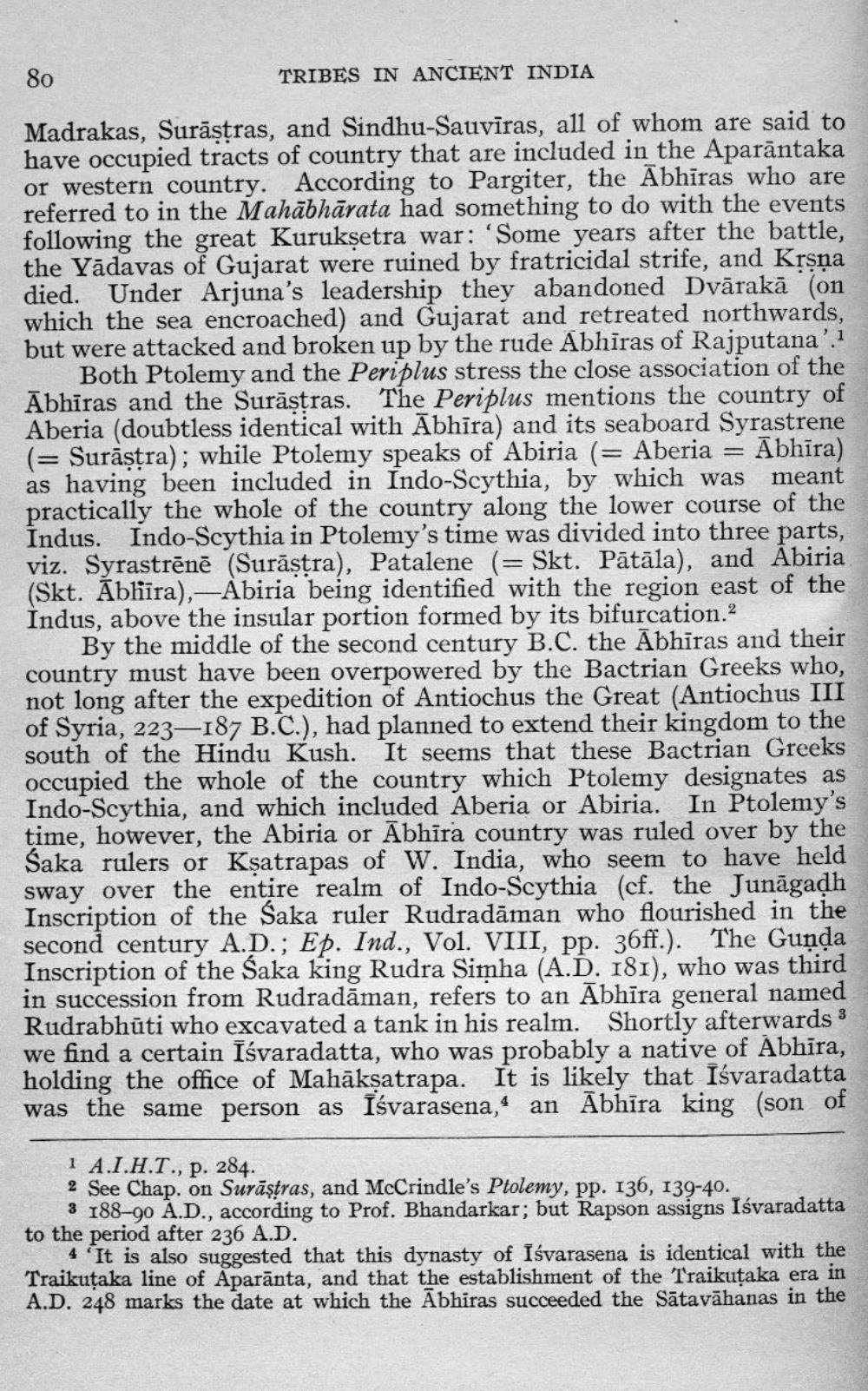________________
80
TRIBES IN ANCIENT INDIA
Madrakas, Surāstras, and Sindhu-Sauvīras, all of whom are said to have occupied tracts of country that are included in the Aparāntaka or western country. According to Pargiter, the Abhiras who are referred to in the Mahābhārata had something to do with the events following the great Kuruksetra war: 'Some years after the battle, the Yādavas of Gujarat were ruined by fratricidal strife, and Krsna died. Under Arjuna's leadership they abandoned Dvārakā (on which the sea encroached) and Gujarat and retreated northwards, but were attacked and broken up by the rude Abhīras of Rajputana '.1
Both Ptolemy and the Periplus stress the close association of the Abhiras and the Surāstras. The Periplus mentions the country of Aberia (doubtless identical with Ābhīra) and its seaboard Syrastrene (= Surāstra); while Ptolemy speaks of Abiria (= Aberia = Abhira) as having been included in Indo-Scythia, by which was meant practically the whole of the country along the lower course of the Indus. Indo-Scythia in Ptolemy's time was divided into three parts, viz. Syrastrēnē (Surāstra), Patalene (= Skt. Pātāla). and Abiria (Skt. Ābhira),—Abiria being identified with the region east of the Indus, above the insular portion formed by its bifurcation.
By the middle of the second century B.C. the Ābhīras and their country must have been overpowered by the Bactrian Greeks who, not long after the expedition of Antiochus the Great (Antiochus III of Syria, 223—187 B.C.), had planned to extend their kingdom to the south of the Hindu Kush. It seems that these Bactrian Greeks occupied the whole of the country which Ptolemy designates as Indo-Scythia, and which included Aberia or Abiria. In Ptolemy's time, however, the Abiria or Abhira country was ruled over by the Saka rulers or Ksatrapas of W. India, who seem to have held sway over the entire realm of Indo-Scythia (cf. the Junāgadh Inscription of the Saka ruler Rudradāman who flourished in the second century A.D.; Ep. Ind., Vol. VIII, pp. 36ff.). The Gunda Inscription of the saka king Rudra Simha (A.D. 181), who was third in succession from Rudradāman, refers to an Abhīra general named Rudrabhūti who excavated a tank in his realm. Shortly afterwards 3 we find a certain Iśvaradatta, who was probably a native of Abhīra, holding the office of Mahāksatrapa. It is likely that Iśvaradatta was the same person as Îśvarasena, an Abhīra king (son of
1 A.I.H.T., p. 284. 2 See Chap. on Surāştras, and McCrindle's Ptolemy, pp. 136, 139-40.
3 188-90 A.D., according to Prof. Bhandarkar; but Rapson assigns Isvaradatta to the period after 236 A.D.
4 It is also suggested that this dynasty of Isvarasena is identical with the Traikutaka line of Aparānta, and that the establishment of the Traikutaka era in A.D. 248 marks the date at which the Abhiras succeeded the Sātavāhanas in the




